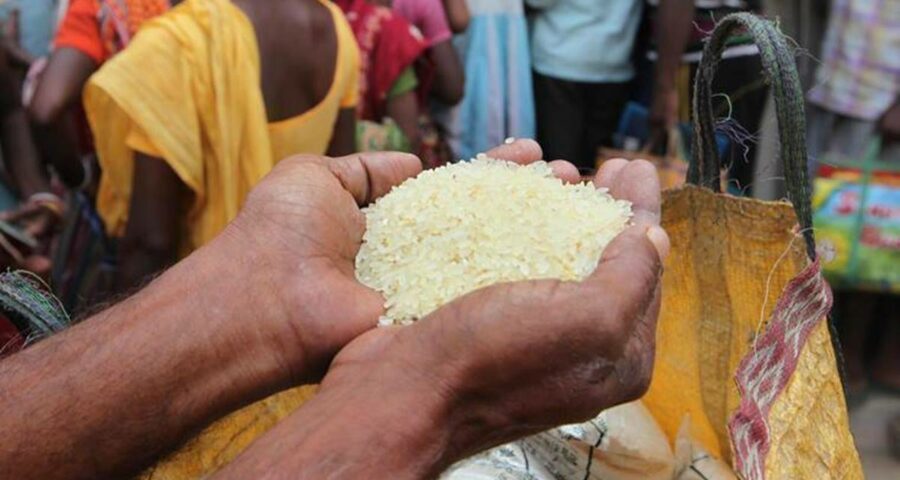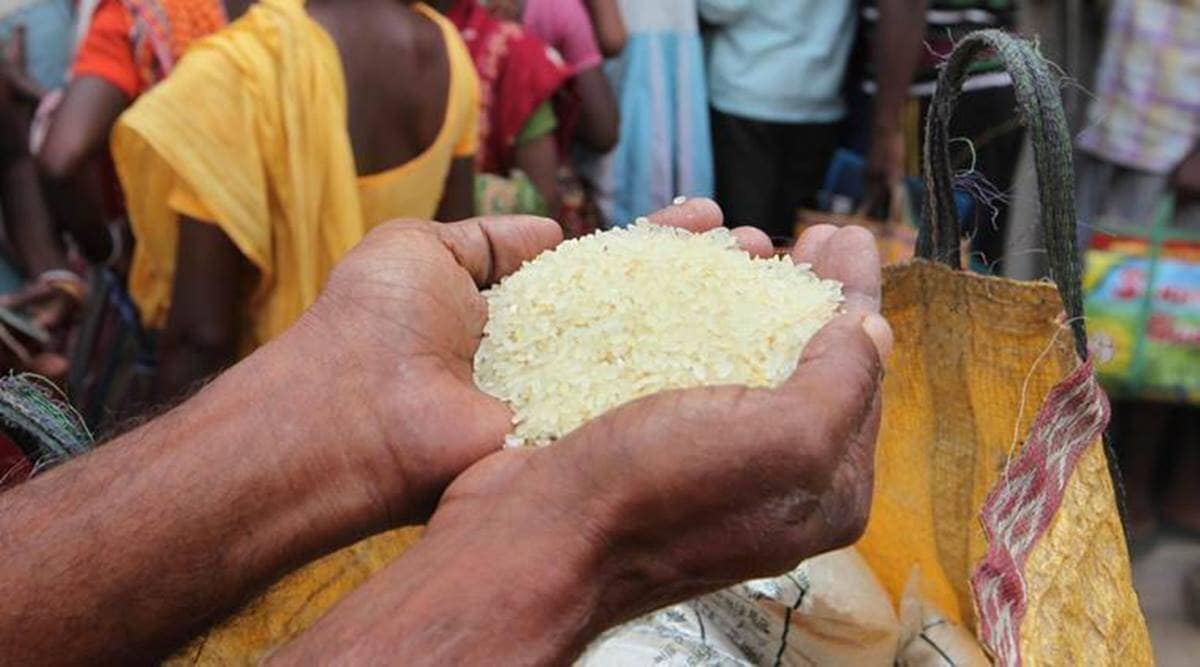The One Nation One Ration Card is the most far-reaching reform of the public distribution ecosystem since the Food Security Act. It will provide food security to jobless migrants
Written by Sarthak Agrawal and Saurabh Yadav
As the Supreme Court’s deadline for all states to join the One Nation, One Ration Card (ONORC) initiative nears, this is an opportune time to examine how the scheme has fared in its first two years. ONORC allows a beneficiary to access his food entitlements from anywhere in India irrespective of the place where the ration card is registered. This full mobility of food subsidy under the National Food Security Act (NFSA), 2013 relies on digitisation of the public distribution system (PDS), a network of over 5,00,000 fair-price shops (FPS). Thirty-two states and Union territories have already completed the formalities of the scheme, which include linking beneficiaries’ ration cards with their Aadhaar numbers and installing e-Point of Sale (e-POS) machines in each FPS. Assam, Chhattisgarh, Delhi, and West Bengal may also join by July 31.
The Integrated Management of Public Distribution System (IMPDS) portal records all purchases made under ONORC. We accessed this publicly available data set to better understand the patterns and trends in ration uptake between July 2019 and June 2021. However, IMPDS only includes transactions involving inter-state migrants. Hence, our results do not capture ONORC’s full potential since intra-state portability of ration cards is another important policy innovation under its ambit. (Aggregated data for the latter is captured on a separate portal called Annavitran.)
Our first finding, already noted by other authors, is that migrant workers are yet to fully benefit from this initiative. In the last two years, the IMPDS recorded only 50,320 inter-state transactions, or, around 2,100 per month, on average. However, despite remaining low for the first year, the number of daily transactions picked up after July 2020. This was around the time when Centre incentivised ONORC compliant states with an additional borrowing window. Since June 2019, maximum purchases took place in Daman and Diu (around 7,200), Gujarat (6,100) and Uttar Pradesh (6,000). Beneficiaries were most likely to come from UP, followed by Bihar and Maharashtra. However, these numbers are more reflective of the pace at which different states adopted this scheme, rather than actual migration patterns in India.
Second, there is no evidence to suggest that the poorest beneficiaries are being excluded from ONORC. Under the NFSA, there are two kinds of card holders: Priority households (PHH), and the Antyodaya Anna Yojana (AAY) families, which are entitled to more generous food subsidies. These “poorest of the poor” ration card holders made around 9 per cent of the purchases in our data — only slightly less than the 9.5 per cent ratio for AAY beneficiaries among all card holders in the country.
Third, looking closely at the timing of the transactions reveals some interesting puzzles. If PDS purchases were equally spaced over the entire 30-day cycle, around half of them should occur by the 15th. Surprisingly, in the first two years, and on average, 50 per cent of the monthly transactions in Jharkhand were completed only by the 21st of the typical month. Jharkhand is not the only outlier. In Telangana, half of the purchases occurred as early as the 8th. The median day of sale pan India started climbing after December 2020, when it rose sharply from 13th to the 21st. More research is needed to uncover the reasons behind these spatial and temporal patterns, but a combination of seasonal factors, timing of government transfers, the wage payment cycle, and advance stocking of grains by households might help explain them. Alternatively, if delayed availability of rations is leading to postponement of purchases in certain states, the government can intervene to address any logistical issues.
Fourth, since food security for jobless migrants was of concern during the peaks of the Covid-19 pandemic, we investigated whether ration uptake changed with external pandemic conditions. Our results indicate that higher daily Covid-19 caseloads are associated with a lower number of transactions in a state, even after accounting for the prevailing lockdown conditions. Collection of free wheat rations also declined when cases rose.
Fewer transactions may occur if buyers and sellers are reluctant to trade as infections spiral. However, if this is what is driving our results, we should not expect the average transacted amount to also fall with rising Covid-19 cases. Despite all hardships, once the two parties come face-to-face, they should transact as usual. Unavailability of stocks with ration shops, especially additional supplies of free wheat promised by the Centre, thus appears to be a plausible reason for these findings, although richer data from field surveys can help reaffirm it.
Finally, the ONORC can reduce leakages in PDS because it reassigns the responsibility to deliver migrant workers’ share of food grains from low capacity, labour-surplus states to those with greater migrant inflows and proven experience in implementing welfare schemes faithfully. For example, Bihar “lost” 2,71,311 kg of potential rations, while Kerala “gained” 47,882 kg of rice and wheat between 2019-21 as cards became portable. In 2011-12, PDS leakage was estimated at 69 per cent and 43 per cent, respectively, in Bihar and Kerala. The numbers are dated, but if pilferage is inversely related to state capacity, overall efficiency gains can accrue post this rejig.
These are some initial conclusions based on our reading of the IMPDS data. As the scheme gathers force, more trends and patterns will emerge, based on which governments can tweak their policies. For instance, if emergencies continue to hamper uptake at ration shops, alternate delivery channels can be considered for delivering food grains to vulnerable groups.
The ONORC is the most far-reaching reform of the public distribution ecosystem since the NFSA. All eyes will be on it as after 75 years of the ration card’s introduction, India is moving closer towards having “One Ration Card”.
Agrawal is a researcher at the Poverty & Equity global unit at the World Bank. Yadav is a data scientist. Views are personal
Source: Read Full Article


